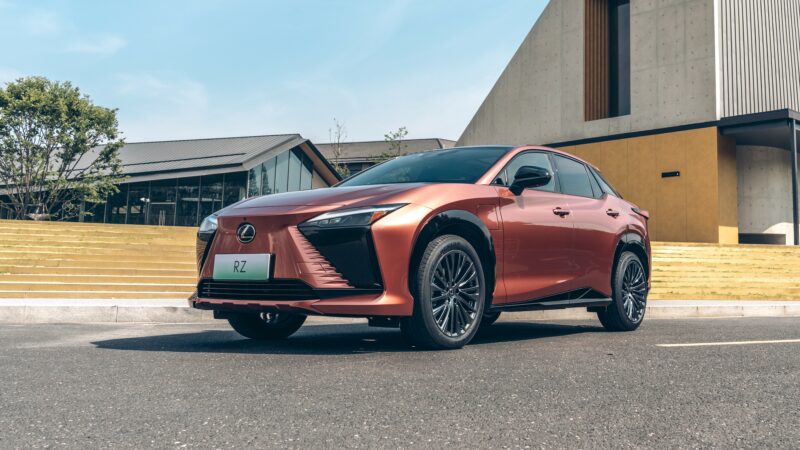Lexus Malaysia recently announced the arrival of the all-new electric SUV, the Lexus RZ 450e 2024, for the local market, offered in a single Luxury variant only.
Reservations for this model are now open, with a starting selling price of RM429,888 on the road without insurance.
Here is a brief overview of the specifications of the Lexus RZ 450e Luxury electric SUV:
Dual electric motor configuration
The Lexus RZ 450e comes equipped with two electric motors as standard, comprising a front motor with 201 hp/266 Nm and a rear motor with 107 hp/169 Nm.
Altogether, the Lexus RZ 450e is capable of producing a power of up to 308 hp that drives all wheels through the DIRECT4 propulsion system. It includes three driving modes: Confidence, Control, and Comfort.
Range of 440 km
The Lexus RZ 450e comes with a 71.4 kWh battery pack allowing for a range of 440 km on a full charge (WLTP data). The lithium-ion battery can be charged using AC charging up to 11 kW, or rapid DC charging up to 150 kW.
“Seamless E-Motion” Design
Despite sharing the same e-TNGA platform as the Toyota bZ4X, Lexus has used its own design approach to make the RZ 450e model more premium in appearance. The powerful exterior character is the result of the “Seamless E-Motion” design concept inspired by the cheetah.
The iconic Spindle grille structure found on any Lexus vehicle has been replaced with the BEV Spindle Body for the RZ model. There are six color options offered for the Malaysian market, including Sonic Copper, Sonic Chrome, Graphite Black Glass Flake, Sonic Quartz, Sonic Iridium, and the new Aether Metallic color.
Tazuna Concept Cabin Space
Similar to the latest Lexus models, the Lexus RZ 450e cabin also adopts the Tazuna concept where all driving control buttons are focused on the steering wheel. It features an 8-inch digital cluster screen, a 14.0-inch infotainment screen intentionally positioned towards the driver, a head-up display (HUD) screen, and the Mark Levinson Premium surround sound system with 13 speakers.
Among other features are the Lexus Climate Concierge, nanoe™ X air filtering system, 64-color cabin lighting, and a Tsuyasumi-designed center console that delivers a glossy charcoal effect. The Lexus RZ 450e also prioritizes the use of eco-friendly materials, for example, seats made of Sustainable Grayscale Utrasuede and door panel trims made of recycled PET material.
Lexus Safety System (LSS+)
As standard, the Lexus RZ 450e comes with the third-generation Lexus Safety System (LSS+) safety features, including various world-class functions, along with the Lexus Teammate Advance Park assistance, surround-view camera, and 12 ultrasonic sensors.
According to Lexus Malaysia, the Lexus RZ 450e Luxury will only be offered in limited units, with each owner being covered by a five-year unlimited mileage manufacturer’s warranty, as well as an eight-year unlimited mileage warranty for the battery system, extendable for two years.
